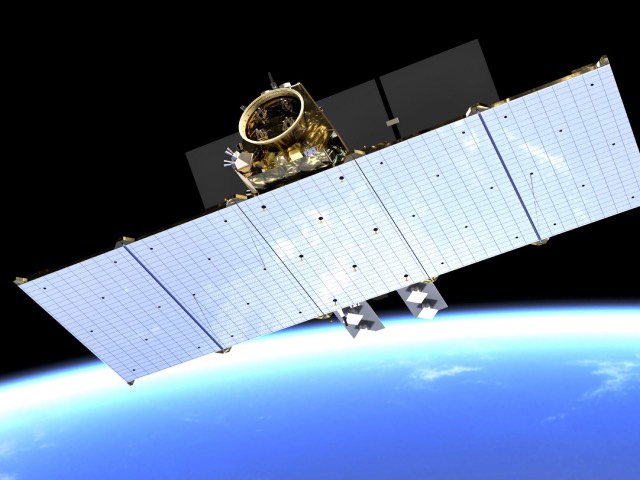ROSE-L will be equipped with the largest planar space radar antenna ever built
Airbus has been selected by Thales Alenia Space to build the advanced radar instrument for the ‘Radar Observatory System for Europe in L-band’ (ROSE-L) mission. Airbus Defence and Space in Friedrichshafen (Germany) will head an industrial consortium for the radar instrument involving companies from nine countries to deliver the project. The contract, awarded to Airbus by the mission’s Prime contractor Thales Alenia Space, is worth about € 190 million.
With launch planned in July 2027, the Copernicus ROSE-L mission will carry an active phased array synthetic aperture radar instrument. From its 690 km polar orbit ROSE-L will provide day-and-night monitoring of land, oceans and ice offering more frequent imaging at high spatial resolution and sensitivity. It will use advanced radar techniques including polarimetry and interferometry to create its data products. The radar antenna will be the largest planar antenna ever built measuring an impressive 11 metres by 3.6 metres; this is roughly the size of 10 ping-pong tables.
During its 7.5 year lifetime, the ROSE-L mission will serve the needs of many users including the European Union’s Copernicus Land Monitoring and Emergency Management services. It will provide important data on soil moisture, precision farming, food security, forest biomass and changes to land use. In addition, the mission will monitor polar ice sheets and ice caps, sea ice extent, and snow cover.
“The selection of Airbus to design this complex radar payload is a tribute to Airbus’ world leadership in space radar technology,” said Jean-Marc Nasr, head of Space Systems at Airbus. “Earth is surely the best and probably the only viable option for mankind. So we need to take good care of it. Our radar will enable the ROSE-L mission to do just that, helping to understand climate change and support sustainable ecological transition. This Copernicus new generation satellite is an enabler for the European Green Deal and Airbus is proud to be playing its part.”
Overall, Airbus is responsible for the spacecraft or payload on 3 of the 6 new generation Copernicus Environment and Earth observation missions: LSTM, CRISTAL and ROSE-L, and is providing critical equipment to all six.
About Copernicus
The Copernicus Sentinels are a fleet of dedicated EU-owned satellites, designed to deliver the wealth of data and imagery that are central to the European Union’s Copernicus environmental programme. The European Commission leads and coordinates this programme, to improve the management of the environment, safeguarding lives every day. The European Space Agency (ESA) is in charge of the space component, responsible for developing the family of Copernicus Sentinel satellites on behalf of the European Union and ensuring the flow of data for the Copernicus services, while the operations of the Copernicus Sentinels have been entrusted to ESA and EUMETSAT, the European Organisation for the Exploitation of Meteorological Satellites. Airbus is a key industrial contributor on board all Copernicus missions – past and present – developing and manufacturing satellites, instruments and components as well as providing related services.






































